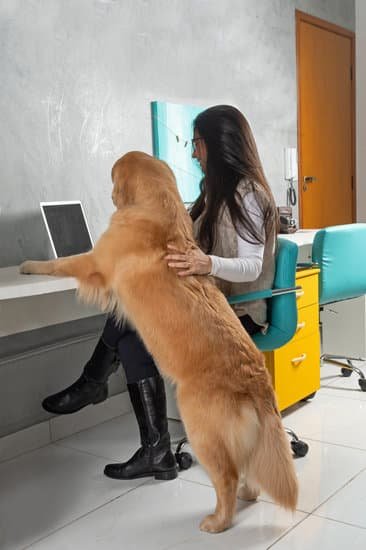Psychiatric service dog training plays a crucial role in providing support and assistance to individuals with mental health conditions. These highly trained animals offer invaluable emotional and physical assistance to their handlers, aiding in their daily activities and overall well-being. From providing comfort during anxiety attacks to alerting to potential triggers, psychiatric service dogs are essential companions for those with psychiatric disabilities.
One of the key qualifications for a psychiatric service dog is its ability to perform specific tasks that mitigate the symptoms of its handler’s mental health condition. This includes recognizing signs of distress, interrupting harmful behaviors, and creating personal space in crowded environments. The training for these specialized tasks is essential in ensuring the dog can adequately support their handler’s unique needs.
Finding the right psychiatric service dog training program is crucial for both the dog and its future handler. A reputable program will focus on individualized training that addresses the specific needs of each client, while also emphasizing the welfare and ethical treatment of the service dogs.
In this article, we will explore the importance of psychiatric service dogs, the qualifications required, and how to find the right training program to ensure these incredible animals can effectively assist individuals with mental health conditions.
Qualifications for Psychiatric Service Dog
When it comes to qualifying for a psychiatric service dog, there are specific criteria that individuals must meet in order to benefit from the support and assistance that these dogs provide. It is important to understand the qualifications required for obtaining a psychiatric service dog, as well as the process involved in obtaining one.
Legal Definition and Documentation
In order to qualify for a psychiatric service dog, individuals must have a diagnosed mental health condition recognized by the Diagnostic and Statistical Manual of Mental Disorders (DSM-5) such as anxiety disorders, post-traumatic stress disorder (PTSD), or other psychiatric conditions. Additionally, they must be able to provide documentation from a licensed mental health professional confirming the need for a psychiatric service dog.
Lifestyle and Commitment
Prospective owners of psychiatric service dogs must be able to demonstrate that they have the lifestyle and commitment necessary to care for and work with their dog on a daily basis. This requires being able to provide appropriate exercise, grooming, veterinary care, and consistent training. Individuals should also demonstrate that they have stable housing and financial resources to support the needs of their service dog.
Training Program Participation
In addition to meeting the legal requirements and demonstrating personal suitability as an owner, individuals seeking a psychiatric service dog should also be willing to participate in a recognized psychiatric service dog training program. These programs are designed to educate individuals on how to effectively work with their service dogs, teach them about their rights and responsibilities, and ensure that both the owner and the dog are fully prepared for their partnership.
By meeting these qualifications, individuals can make sure that they are ready to benefit from the assistance of a trained psychiatric service dog while also fulfilling their responsibilities as owners.
Finding the Right Psychiatric Service Dog Training Program
Accreditation and Certification
When searching for a psychiatric service dog training program, it’s important to look for accredited and certified programs. Accreditation ensures that the training program meets certain standards of quality and professionalism, while certification indicates that the trainers have the necessary expertise in psychiatric service dog training.
Customized Training Approach
Each individual with a psychiatric service dog has unique needs, so it’s essential to find a training program that offers a customized approach. Look for programs that take into account your specific mental health condition and tailor the training accordingly. This personalized approach can result in a better match between you and your service dog.
Positive Reinforcement Techniques
It’s also crucial to select a training program that focuses on positive reinforcement techniques. Avoid programs that rely on punishment-based methods, as these can be harmful to both you and your future service dog. Positive reinforcement techniques build trust and strengthen the bond between you and your service dog, leading to more effective results.
Considering these factors when searching for a psychiatric service dog training program can help ensure that you find the right fit for you and your needs. By selecting an accredited program with customized training approaches and positive reinforcement techniques, you can set yourself up for success in obtaining a well-trained psychiatric service dog companion.
Basic Psychiatric Service Dog Training Commands
When it comes to psychiatric service dog training, mastering basic commands is essential for both the dog and the handler. These commands form the foundation of the dog’s ability to assist with specific tasks related to their owner’s mental health needs. Here are some of the basic psychiatric service dog training commands that every handler should focus on:
- Sit: Teaching a psychiatric service dog to sit on command is fundamental for maintaining control in different situations, especially in public settings.
- Stay: This command is crucial for keeping the dog calm and focused on their handler, even when faced with distractions or triggers.
- Touch: By teaching a dog to touch their owner’s hand or body part with their nose or paw, handlers can help ground themselves during moments of anxiety or dissociation.
In addition to these fundamental commands, other important basic psychiatric service dog training commands include “heel” for walking, “leave it” to avoid potential hazards, and “come” for recall in case of emergency. Consistent reinforcement and positive reinforcement techniques are key to ensuring that the dog reliably responds to these commands in various scenarios.
Psychiatric service dog training programs often prioritize these basic commands as they lay the groundwork for more advanced skills that are tailored to the specific needs of individuals with mental health conditions. By mastering these foundational skills, both the dog and their handler can establish a strong bond built on trust and effective communication.
Advanced Psychiatric Service Dog Training Techniques
After completing the basic training, psychiatric service dogs can proceed to more advanced techniques that will further enhance their ability to assist individuals with mental health challenges. These techniques are designed to provide even more support and comfort to their handlers, and they require a higher level of training and focus.
Some advanced psychiatric service dog training techniques include:
- Deep pressure therapy: This technique involves the dog applying gentle pressure to their handler’s body, often through leaning or lying on top of them. This can have a calming effect on the handler during times of distress or anxiety.
- Interrupting self-harming behaviors: Psychiatric service dogs can be trained to recognize when their handler is engaging in self-harming behaviors and interrupt them by nudging, licking, or providing an alternative behavior for the handler to engage in.
- Scent-based alerting: Dogs have an incredible sense of smell, and they can be trained to recognize changes in their handler’s scent that may indicate an impending panic attack or other mental health episode. They can then use specific signals to alert their handler or others for assistance.
These advanced techniques require a high level of skill and dedication from both the dog and the trainer. It is important for handlers to work closely with experienced trainers who understand the specific needs of individuals with mental health challenges and can tailor the training program accordingly.
In addition to these advanced techniques, ongoing practice and reinforcement are essential to maintain the effectiveness of a psychiatric service dog. Regular training sessions and opportunities for real-life practice in various environments will help solidify the dog’s skills and ensure that they are able to provide consistent support to their handler.
Understanding the Role of a Psychiatric Service Dog Handler
Psychiatric service dog training is crucial for the well-being of individuals dealing with mental health issues. Once a psychiatric service dog is trained, it becomes an important tool to help people manage their condition by providing support, comfort, and assistance in times of need.
The role of a psychiatric service dog handler is critical in maintaining the effectiveness of the service dog in assisting with specific tasks related to the individual’s psychiatric condition. The handler must be able to recognize and interpret the signals given by the service dog and effectively communicate with the dog to ensure appropriate responses.
Additionally, handlers are responsible for maintaining the welfare and health of their service dogs. This includes ensuring that the dog receives regular veterinary care, adequate exercise, proper nutrition, and a safe environment. Furthermore, handlers must provide ongoing training to reinforce existing skills and incorporate new ones as needed.
Lastly, psychiatric service dog handlers must also be aware of their legal rights and responsibilities. This includes understanding where they can legally take their service dogs, how their rights are protected under disability laws such as the Americans with Disabilities Act (ADA), and how to best advocate for themselves if facing discrimination or denial of their rights due to having a psychiatric service dog.
| Psychiatric Service Dog Handlers | Responsibilities |
|---|---|
| Recognizing signals from the service dog | Maintaining welfare and health of the service dog |
| Providing ongoing training for the service dog | Understanding legal rights and responsibilities |
Maintaining the Well-Being of a Psychiatric Service Dog
The well-being of a psychiatric service dog is crucial to its ability to perform its duties effectively, as well as its overall quality of life. As such, it is the responsibility of the dog’s handler to ensure that their service dog is properly cared for and maintained.
This includes regular exercise, mental stimulation, proper nutrition, grooming, and veterinary care. Neglecting any of these aspects can lead to a decline in the dog’s physical health and performance as a psychiatric service animal.
Regular exercise is important for maintaining the well-being of a psychiatric service dog. Engaging in physical activity not only keeps the dog physically fit but also stimulates their mind. This can be achieved through daily walks, obedience training sessions, and playtime. Additionally, mental stimulation is equally important and can be provided through interactive toys, puzzle games, and obedience exercises.
Proper nutrition plays a significant role in the well-being of psychiatric service dogs. A balanced diet that meets their specific nutritional needs is essential for maintaining their health and energy levels. Moreover, regular grooming and veterinary care are also essential for ensuring the overall well-being of these dogs.
| Aspect | Importance |
|---|---|
| Regular Exercise | Physical fitness and mental stimulation. |
| Proper Nutrition | Balanced diet to meet nutritional needs. |
| Grooming & Veterinary Care | Maintaining overall health. |
The Legal Rights and Responsibilities of Psychiatric Service Dog Owners
In conclusion, the importance of psychiatric service dogs cannot be overstated. These specially trained animals provide invaluable support and assistance to individuals dealing with various mental health conditions. From providing comfort during anxiety attacks to alerting to changes in behavior, psychiatric service dogs play a crucial role in enhancing the quality of life for their owners.
To qualify for a psychiatric service dog, individuals must meet certain criteria, and finding the right training program is essential. It is important to ensure that the program not only meets the individual’s needs but also adheres to standards and regulations for psychiatric service dog training. The keyword “psychiatric service dog training” is crucial in this process as it ensures that the dog receives proper training and can effectively aid its owner in managing their mental health.
Understanding the legal rights and responsibilities of psychiatric service dog owners is also vital. Laws such as the Americans with Disabilities Act (ADA) protect the rights of individuals with psychiatric disabilities to have a service dog accompany them in public places.
However, it is essential for owners to comply with regulations regarding their dog’s behavior and care. By upholding these responsibilities, owners can advocate for themselves and others who benefit from the support of psychiatric service dogs, ultimately promoting awareness and acceptance within their communities.
Frequently Asked Questions
Can You Train Your Dog to Be a Psychiatric Service Dog?
Yes, you can train your dog to be a psychiatric service dog. It requires specialized training to assist individuals with mental health conditions and perform specific tasks to mitigate their symptoms.
What Is a Psychiatric Service Dog?
A psychiatric service dog is specially trained to support individuals with psychiatric disabilities. These dogs can provide emotional support, detect and interrupt self-harming behaviors, remind their handlers to take medication, and provide a sense of security during anxiety or panic attacks.
How Many Tasks Does a Psychiatric Service Dog Need?
The number of tasks a psychiatric service dog needs can vary depending on the individual’s specific needs. There is no set number of tasks, but these dogs are trained to perform tasks that help their handlers cope with their mental health conditions, such as grounding techniques during dissociative episodes or guiding them out of stressful situations.

Welcome to the blog! I am a professional dog trainer and have been working with dogs for many years. In this blog, I will be discussing various topics related to dog training, including tips, tricks, and advice. I hope you find this information helpful and informative. Thanks for reading!





